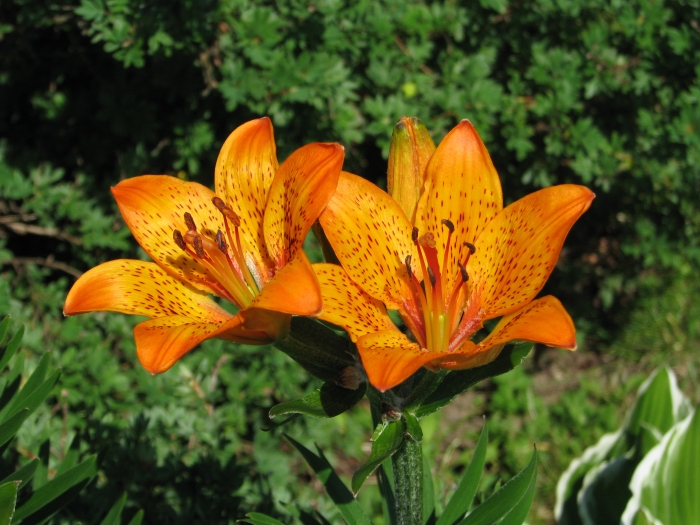Siberian Lily
(Lilium pensylvanicum)
Siberian Lily (Lilium pensylvanicum)
/
/

Нацку
CC BY-SA 3.0
Image By:
Нацку
Recorded By:
Copyright:
CC BY-SA 3.0
Copyright Notice:
Photo by: Нацку | License Type: CC BY-SA 3.0 | License URL: https://creativecommons.org/licenses/by-sa/3.0 | Uploader: Jafeluv | Publisher: Wikimedia Commons | Title: Lilium_dauricum_2009-06-29.jpg | Notes: {{Information |Description={{en| [[w:Lindera benzoin|Common Spicebush]] ([[Lindera benzoin]]) on the [[w:Al Sabo Preserve|Al Sabo Preserve]] in [[w:Texas Charter Township, Michigan|Texas Township]], [[w:Michigan|Michigan]]. }} |Source=self-made |Date=[[w: |













Estimated Native Range
Summary
Lilium pensylvanicum, commonly known as Siberian Lily, is a perennial herb native to the meadows, forest clearings, and river valleys of Siberia and northeastern Asia. It is adapted to cold climates and requires a period of winter frost to thrive. This species typically reaches a height of 30–70 centimeters (12–28 inches) and spreads up to 25 cm (10 inches). The Siberian Lily has a sturdy, smooth, and straight stem with linear to lanceolate leaves that are 4–5 cm (1.6–2.0 inches) long and 3–4 millimeters (0.12–0.16 inches) wide. From June to July, it produces one to six upright, dish-shaped flowers that are showy and range in color from bright yellow to orange with brownish spots, attracting pollinators such as bees and butterflies.
The Siberian Lily is valued for its striking flowers and ease of cultivation, making it a popular choice for temperate gardens. It is often used in perennial borders, wildflower meadows, and as a specimen plant. While it is undemanding in terms of care, it does require consistent moisture, especially during the growing season, and is sensitive to drought. Gardeners should provide it with full sun to light shade and plant it in well-drained soil with a neutral to slightly acidic pH. It is not commonly afflicted by serious diseases or pests, but gardeners should watch for lily beetles which can damage the foliage.CC BY-SA 4.0
The Siberian Lily is valued for its striking flowers and ease of cultivation, making it a popular choice for temperate gardens. It is often used in perennial borders, wildflower meadows, and as a specimen plant. While it is undemanding in terms of care, it does require consistent moisture, especially during the growing season, and is sensitive to drought. Gardeners should provide it with full sun to light shade and plant it in well-drained soil with a neutral to slightly acidic pH. It is not commonly afflicted by serious diseases or pests, but gardeners should watch for lily beetles which can damage the foliage.CC BY-SA 4.0
Plant Description
- Plant Type: Herb
- Height: 1-2.1 feet
- Width: 0.429-0.9 feet
- Growth Rate: Moderate
- Flower Color: Yellow, Orange, Red
- Flowering Season: Summer
- Leaf Retention: Deciduous
Growth Requirements
- Sun: Full Sun
- Water: Medium
- Drainage: Medium
Common Uses
Bee Garden, Bird Garden, Butterfly Garden, Fragrant, Hummingbird Garden, Potted Plant, Showy Flowers, Water Garden
Natural Habitat
Native to the meadows, forest clearings, and river valleys of Siberia and northeastern Asia
Other Names
Common Names: Pine Lily
Scientific Names: , Lilium pensylvanicum, Lilium dauricum, Lilium maculatum subsp. dauricum, Lilium dahuricum, Lilium maculatum var. dauricum, Lilium sachalinense, Lilium bulbiferum subsp. dauricum, Lilium citrinum, Lilium dauricum var. alpinum
GBIF Accepted Name: Lilium pensylvanicum Ker Gawl.